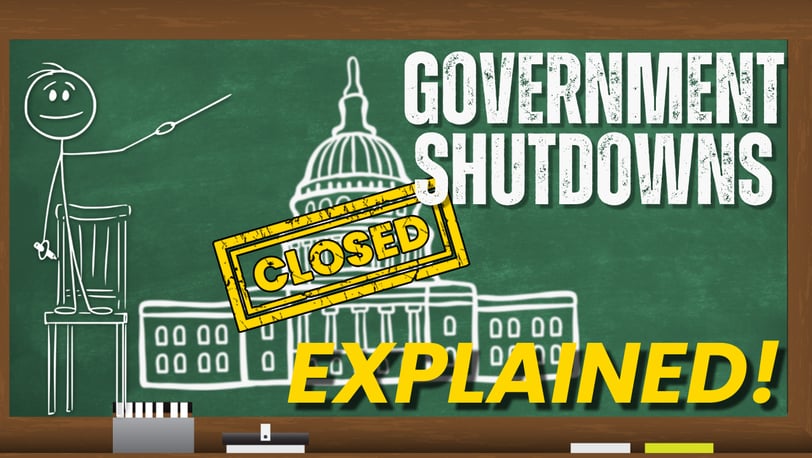Understanding Government Shutdowns
A government shutdown happens when Congress fails to pass funding bills, causing federal agencies to halt non-essential operations. These shutdowns disrupt public services, impact federal workers, and can have lasting economic consequences.
3/14/20252 min read


Understanding Government Shutdowns: Causes, Impact, and History
A government shutdown occurs when the U.S. Congress fails to pass funding legislation that the president can sign into law before a specified deadline. Without this funding, non-essential federal government operations cease, while essential services such as national security, air traffic control, and Social Security payments continue.
Causes of a Government Shutdown
Government shutdowns typically stem from disagreements over federal budget allocations. These disputes often involve major policy issues such as healthcare, immigration, or defense spending. If Congress and the president cannot agree on funding bills, agencies must halt their operations until new legislation is enacted.
Effects of a Shutdown
Federal Employees & Contractors: Hundreds of thousands of government employees are furloughed (placed on unpaid leave), while others work without immediate pay. Contractors, unlike federal employees, do not always receive back pay once the shutdown ends.
Public Services & Programs: National parks, museums, and other federally funded sites may close. Programs like food assistance (SNAP) could experience delays if the shutdown is prolonged.
Economic Consequences: Shutdowns disrupt economic growth, affecting consumer confidence and business operations. The 2018-2019 shutdown, which lasted 35 days, cost the economy an estimated $11 billion, according to the Congressional Budget Office.
Historical Government Shutdowns
The U.S. has experienced multiple shutdowns since the modern budget process was established in the 1970s. Some notable examples include:
1995-96 Shutdowns: Two separate shutdowns occurred when President Bill Clinton clashed with Speaker Newt Gingrich over Medicare, education, and other budget priorities. The second shutdown lasted 21 days, one of the longest in history.
2013 Shutdown: A 16-day shutdown resulted from a dispute over the Affordable Care Act ("Obamacare"), affecting national parks, scientific research, and federal employees.
2018-19 Shutdown: The longest shutdown in U.S. history lasted 35 days, triggered by a disagreement over border wall funding between President Donald Trump and Congress.
Lessons & Consequences
Shutdowns tend to be unpopular with the public and can impact political standing. For example, during the 1995-96 shutdown, Republicans saw a decline in public approval, while President Clinton's approval ratings improved. Similarly, the 2013 shutdown led to a backlash against Congress.
While shutdowns are a significant political tool, they often result in economic losses and disruptions without achieving major policy changes. Lawmakers have increasingly looked for ways to prevent shutdowns, such as temporary funding measures (continuing resolutions) to keep the government running while budget negotiations continue.
